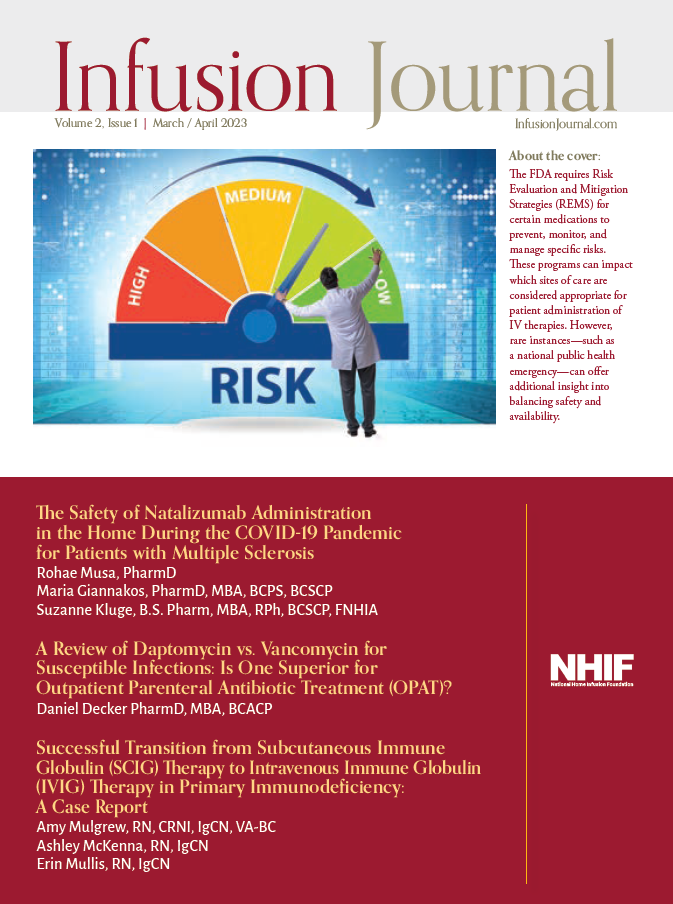Michelle Simpson, PharmD, BCSCP, MWC | Editor-in-Chief, Infusion Journal
The Food and Drug Administration’s (FDA) risk evaluation and mitigation strategies (REMS) drug safety program keeps drugs on the market that would otherwise be withdrawn due to safety risks. The FDA can require a REMS for certain medications with serious safety concerns. REMS are not designed to mitigate all the adverse events of a medication but focus on preventing, monitoring, or managing a specific serious risk. The requirements of a REMS can be modified or revised over time as patient safety data is collected, studied, and reported.
The natalizumab (Tysabri®) REMS was first approved in 2011, and since then, the REMS has been modified 9 times and revised 4 times.1 It has been updated 13 times in 12 years. The REMS may have changed frequently, but it consistently restricted infusion sites of care to exclude the home as an approved site for natalizumab administration. Through the COVID-19 public health emergency (PHE) and its effect on access to care in ambulatory settings, the drug manufacturer modified the REMS to open patient access to administering natalizumab in the home for patients and providers meeting the updated REMS criteria.
The REMS modification allowing home administration offered new opportunities to study and report differences in medication safety related to the site of care. The article in this issue of Infusion Journal titled “The Safety of Natalizumab Administration in the Home During the COVID-19 Pandemic for Patients with Multiple Sclerosis” studied patients who received natalizumab in an infusion suite for their initial treatments and then transitioned to administration in the patient home. Previous studies reported that patients preferred home infusion, stating significantly better physical and mental health and less disruption of family and personal lifestyle patterns.2 Increased access to home infusion of natalizumab gave eligible patients the option of choosing their preferred site.
The current REMS, modified as part of the PHE and allowing for the home as the site for administration, requires providers (the pharmacy and nursing service) to have additional training. Based on the results from the study presented in this issue, the modification was effective for maintaining safety in both the infusion suites and the patient’s homes.
The PHE ends in May 2023, which could mean the FDA will request the REMS to return to pre-PHE strategies requiring administration only in approved infusion sites. If this happens, what will happen to the patients who received infusions at home during the PHE? Will they be considered for continued home administration? What about other patients who meet the criteria and would prefer home administration?
This is an interesting situation because of the unique events that opened access to the home for natalizumab infusions. When the drug manufacturer submits documentation to the FDA for approval of modifications to the natalizumab REMS, research from published studies like the one in this month’s Infusion Journal may support current and future patients in expanded access. When safety outcomes are comparable, decisions for the site of care should be guided by prescribers in collaboration with the nurses and pharmacists of the home infusion pharmacy.
Infusion Journal is dedicated to publishing research on infusion therapies and welcomes submissions from authors on topics relevant to infusion therapy administered in the home, clinic, suite, or another setting.


